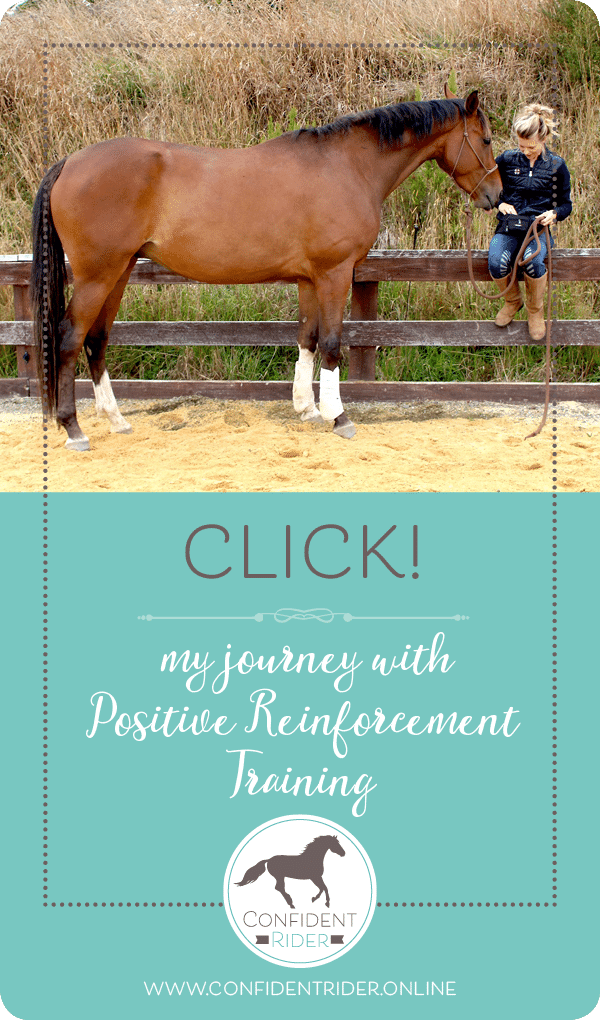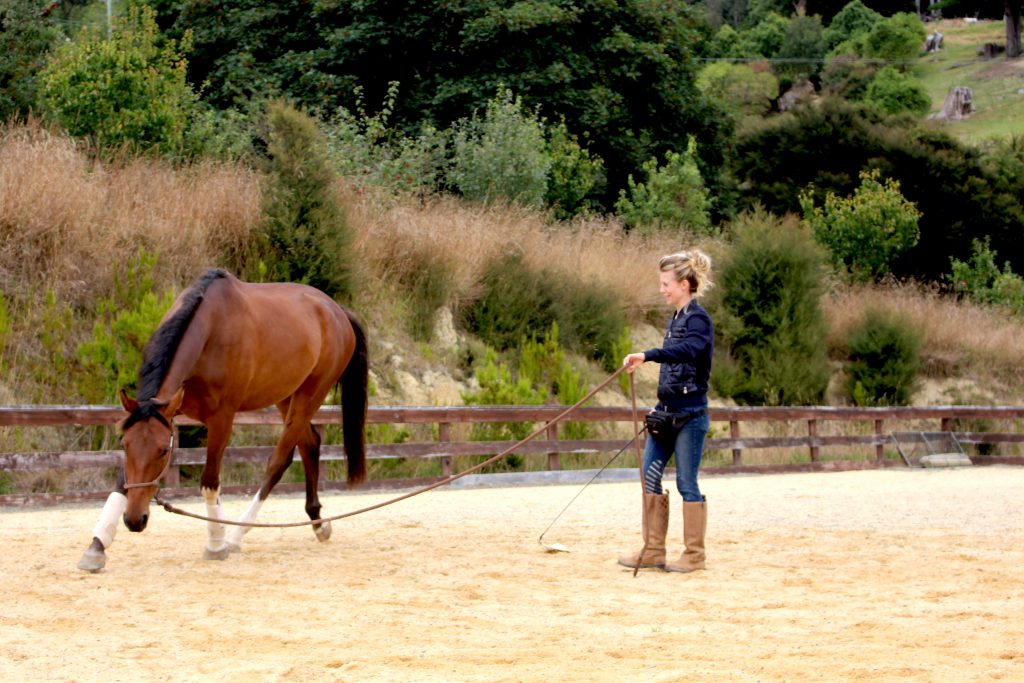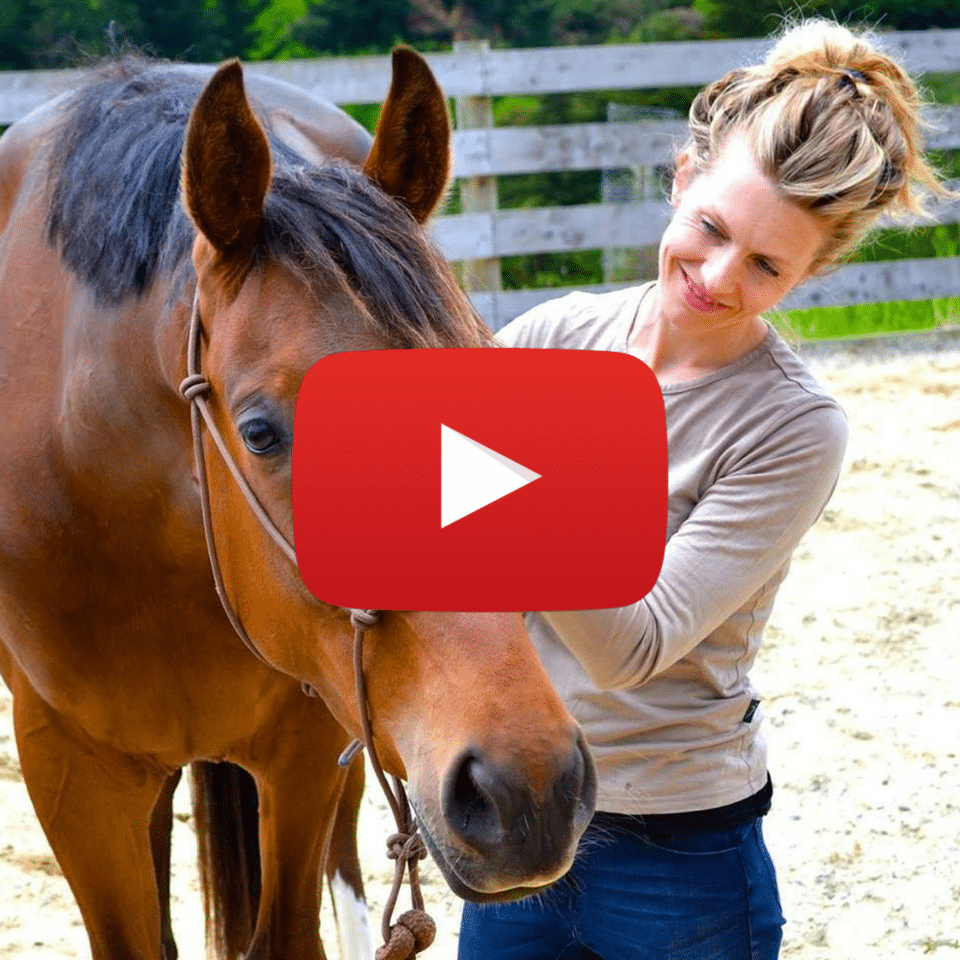
I admit that it took me a little while to come around to the idea of using the clicker in my training. Despite my current enthusiasm, I had a long list of largely uninformed and wildly presumptuous reasons as to why I didn’t think it was something that I wanted to incorporate into my training, or why it wasn’t the way forward for me. At this point (which I am thankful to say is a little while ago now) I had done something which I see often in the equestrian world- I’d closed myself off to what is an amazing training tool simply because it was different to what it was I currently did.
Growing up, I was always a very traditional rider and trainer. My entire family rode, we looked after our horses well and loved them very much, but I never really explored outside the box of what everyone else around me was doing. It was only after a break from horses due to working overseas and then the return to having them in my life as an adult that my mind blew open to the various possibilities that existed in terms of not just training, but in developing partnership. And now, just as in the “people training” work that I now do and love, I can see that horse training begins with ensuring mental stability and relaxation also. Create an emotionally happy horse and the rest is just gymnastics.
The biggest difference in my approach now is that I used to work from the outside in. Now it’s from the inside, out.
In my journey over the last few years, Warwick Schiller has undoubtedly been the biggest influence on me, and through knowing and working with him, I have been led to the awesomeness of Robyn Schiller, Ellie O’Brien and Katy Negranti, all of whom I consider to be integral members of my horsey tribe, friends and mentors. There is a long list of things that I admire about these gems of people, but at the top of the list is their open mindedness. They are willing and open to discussion about most of anything and then evaluate it against what they know and what is the best for the horse. I have them to thank for the continual explosion of brain cells that happens regularly now in terms of opening my eyes to how my horse thinks and responds, and I’m blessed to be able to draw on their passionate wisdom.

Most recently, I have come to include Georgia Bruce in the list above; I have been fan girling on Georgia for a little while now, and her ability to pair positive reinforcement techniques with incredible performance results made me reach a little deeper into the clicker training world. More recently, when she sent out the call for a handful of 1:1 clients to work with this year, I applied to be one of them. And fortunately for me, I have begun the journey to incorporating clicker into my training with Georgia to draw on for advice.
I’ve only been going a couple of weeks, but before I tell you of the benefits I have noticed, I want to share with you some of my hang ups about using the clicker and maybe shed some light on some misconceptions that are floating around there also.
Let’s take it from the top.
My horse is too greedy for the clicker. If I start using food rewards, he’s going to turn into a man-eating dinosaur.
Fair play. The first thing that we often think of is the food rewards, and if our horse is currently a bit snatchy snatchy with the treats, then it can seem like an all round bad idea.
What I have since learned is that firstly, having a horse that really likes his food is great! It means he will have a lot of motivation for the reward, so it’s something you can definitely use to your advantage.
Secondly, and perhaps most ironically, the use of rewards or positive reinforcement actually teaches them manners and empties out the anxiety around food. One of the first steps is to establish that the clicker and the subsequent reward only comes with the cue; once the rules are established, then you can start to work with the clicker elsewhere.
There’s no flow to it. It seems really stop-start-stop-start
For a long time, using the clicker to me seemed to interrupt the flow. I also had a really hard time seeing how you could move from working with the clicker on the ground to utilizing it under saddle. I had it all the wrong way around.
In the beginning, there are a lot of repetitions. Whatever behavior you are looking to train and reinforce, you do so with a high rate of repetitions immediately after the behavior is offered. The feeling in practice is much different to what I expected though- I thought I would be pulled “out of flow” but instead, there is a clarity and focus between us when using positive reinforcement that makes us so much more “in flow” than we ever were before. Once we have shaped and enforced the behavior enough, then with any tool we can phase the clicker out.
The other thing is that the physical and emotional transitions are so beneficial. Physically, it’s resulting in a lot more balance and power. Emotionally, the transitions between rest and go are not only reinforcing the behaviors that I want, but creating an emotionally pliable horse who finds it easy to move between being stationary and active without losing his emotional centre.
You either have to be “this” or “that” but you can’t be both.
If we need to get to the nitty gritty, the main approach I have been using up until now would fall under the banner of negative reinforcement (so the correct response results in removal of pressure). I really wasn’t sure how to utilize positive reinforcement within the scope of what I know (and am happy with). What I understand now, however- and I think this has come with my evolution as a horse person- is that everything is based on principles. If you can understand the principles of when to apply what, then the technique doesn’t matter.
Utilising the clicker hasn’t been a departure from what I’ve been doing already, but literally a positive addition. So now when I ask for something to happen as a result of intention, energy and pressure and release, I positively reinforce the behavior that I want. Click.
What I have noticed…
So far, these have been the biggest benefits I have noticed from incorporating the clicker.
Increase in Motivation
This has been off the charts. Dee is naturally a laid back character and he can tune out if things don’t interest him. The clicker has made him tune in and switch on in a way that’s really lovely to see.
Increased learning speed
Again, it’s been off the chart. For example, I started to introduce the click for the frame that I wanted at this stage, which was long and low. Don’t tell him I said this, but I thought it would take him a while to catch on to what I was talking about, but seriously 3 clicks later and he was totally on to it. It’s now his preferred modus operandi, and I’m seeing many examples of just how quickly he’s picking things up.
Decreased anxiety / increased relaxation
For the first few sessions together, Dee was really busting it out to try and get the right answer. I saw a distinct personality change from being a little bit too chillaxed to being slightly anxious. For example, he started anticipating a lot of my requests and his energy was quite “up”. I talked to Georgia about this and on her advice, just kept on keeping on, being sure to reward the fundamentals of what I was looking for and within two to three sessions he had completely relaxed around the clicker and the rewards.
We’ve only been going a couple of weeks introducing the clicker with diligence, but I’m really excited by how much it has impacted our partnership and learning. I’m excited to keep sharing our journey together with you!
xx Jane

